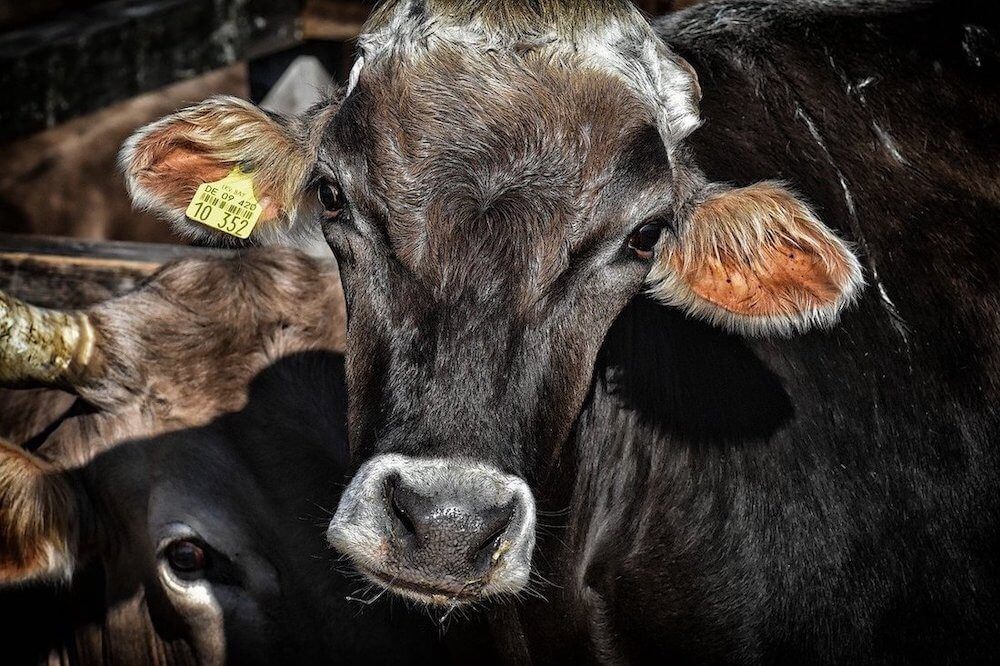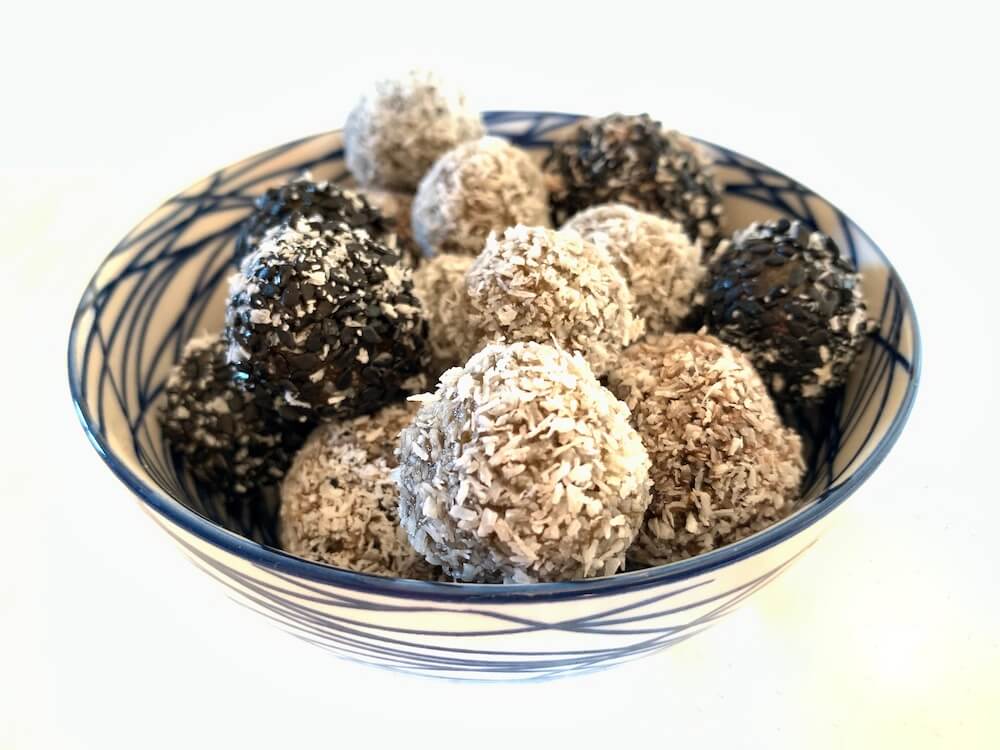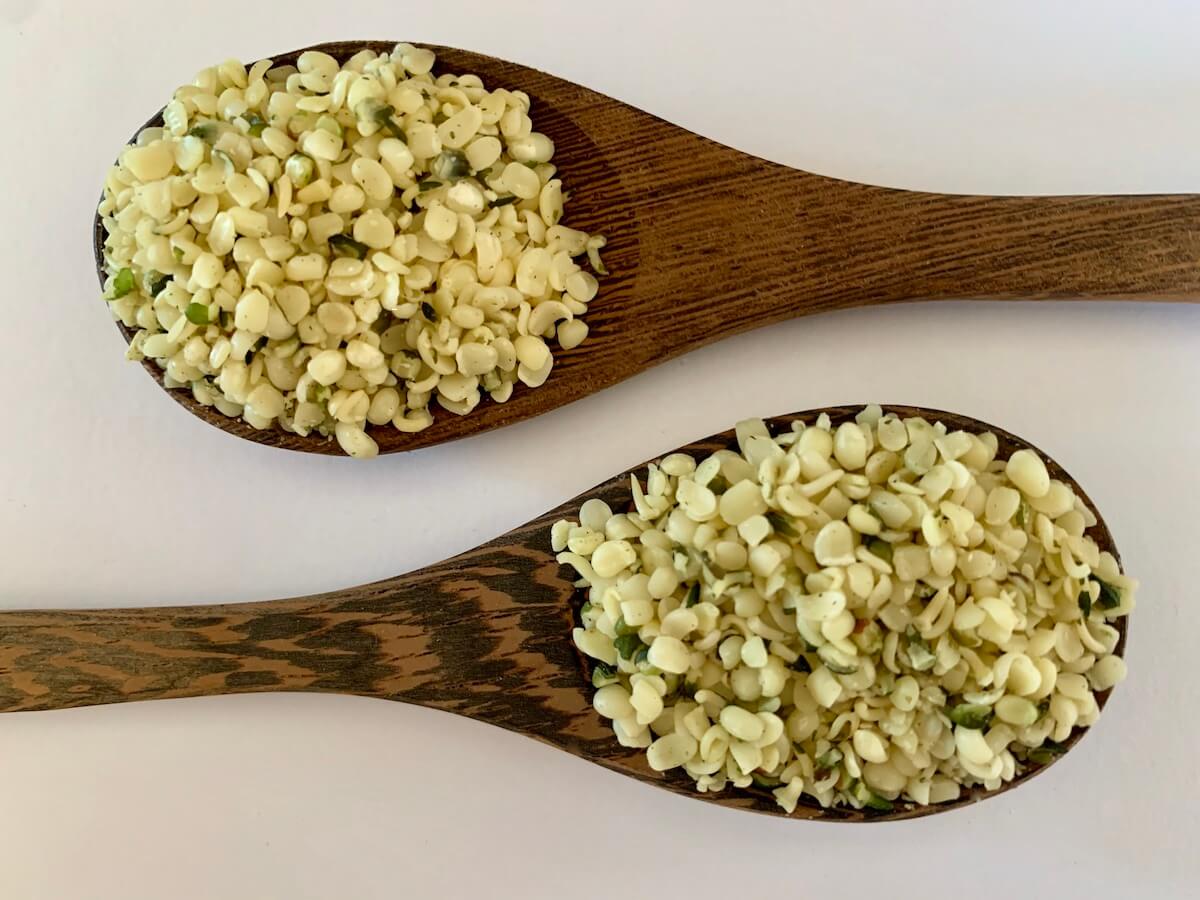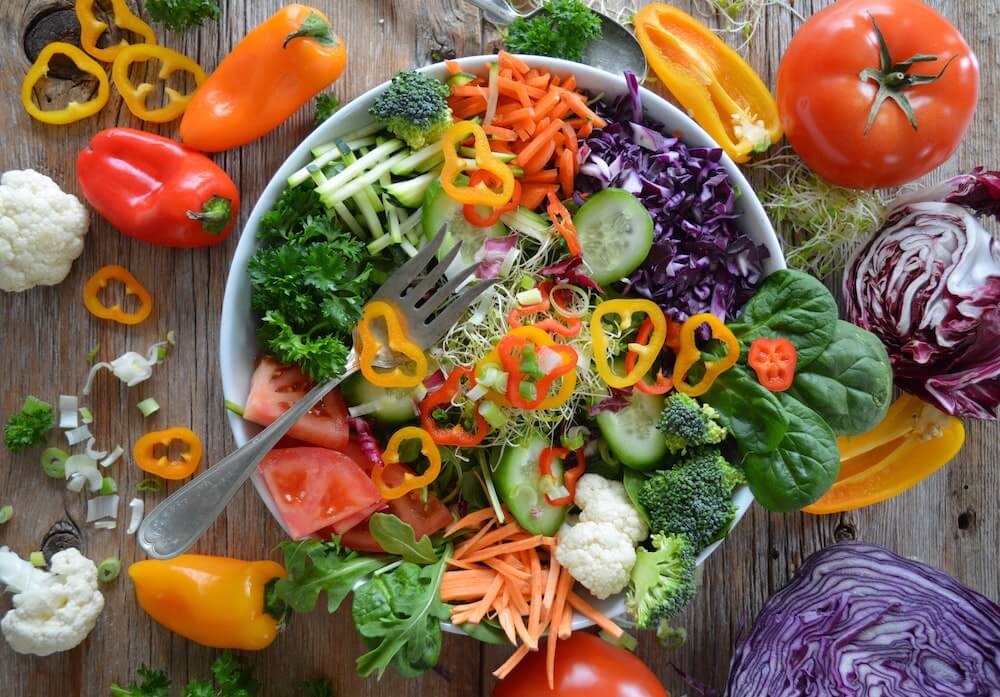The benefits of eating flax seeds are amazing, especially for such a tiny, innocent looking thing!
In fact, including flax seeds in your diet could be one of the most important ingredients you eat as a vegan (but along with so many others lol).
Why? Because it’s a little power house of health benefits, from omega 3, to lignans and more.
Read on to discover how you can enhance your life by including flax in one daily meal.

Flaxseeds are a great source of Omega-3, and if you’re vegan or vegetarian this is the best plant source of omega-3 in the form of alpha-linolenic acid (ALA).
Table of Contents
What are the Benefits of Eating Flax Seeds?
Flax seeds are a rich source of many nutrients and they offer so many health benefits , they’re a must-include in your whole foods plant based vegan diet.
Flax seeds contain:
- Omega 3 Fatty Acids
- Quality Plant Protein
- Dietary Fibre
- Lignans
About ALA Omega 3 in Flax Seeds
Omega 3 is one of two essential fatty acids (EFA) which can’t be produced by the body. Flax seeds are high in ALA, one of three types of omega 3 available to the human body through diet.
The other EFA is Omega 6 but it’s very common to have high levels of omega 6 while deficient in omega 3 as these two need to be present in correct proportions.
Most people have that out of whack by not having the ratio correct.
According to Healthline, the ratio between omega 6 and omega 3 should be between 1:1 to 4:1, yet the western diet typically has a ratio as high as 17:1.
When you have a higher intake of omega 6 this can lead to inflammation and more risk of chronic diseases such as heart disease, diabetes type 2, rheumatoid arthritis and more.
What Can Omega 3 Help to Support?
- Heart health
- Brain development
- Weight loss
- Anti-inflammatory
ALA, the omega 3 present in flaxseed, shows positive results in protecting the heart and reducing the risk of heart disease, as well as lowering the risk of a stroke.
It lowers cholesterol and triglycerides and thus can help you to live a long and healthy life with a healthy heart.
It is also good for mental health and fighting against depression, as well as supporting the development of a young brain.
Omega 3 is also associated with weight loss and reducing inflammation in the body.
Plant Protein From Flax seeds
Flax seeds offer a great source of quality plant protein and are calculated to contain up to 18% protein. Protein is essential fatty acids which are the building blocks of the body and important for maintaining and building all muscle fibre.
Dietary Fibre
Dietary fibre is excellent for regulating the bowels and especially helpful for preventing constipation as well as for anyone suffering from IBS or other gut related issues.
Flaxseeds soaked in water and taken as a gel can regulate your bowel movements and act as a mild laxative.
The dietary fibre in flax is low on the Glycemic index, meaning it can help to control your blood sugar levels.
high in oestrogen properties and antioxidants, both of which are thought to reduce the risk of cancer, especially breast cancer and colon cancer.
Lignans
Lignans are associated with supporting heart health, reducing menopausal symptoms and reducing the risk of breast cancer.
ALA omega 3 and the lignans in flax also help to control and regulate high blood pressure (see source).
How to Eat Flax Seeds?
There are various ways to eat flax seeds with different advantages and disadvantages.
Here we will be looking at the following uses of flaxseed.
- Flaxseed oil
- Flaxseed supplement
- Ground flaxseed sprinkled on top of your food
- Ground flaxseed as an ingredient
- Flaxseed as an egg replacer
- Flaxseed jelly
Flaxseed Oil
You can buy flaxseed oil and pour it over your salads or other food.
This will give you the omega 3, but you will miss out on the lignans and fibre.
Flaxseed Supplement
As with the oil, you can opt for an omega-3 supplement, but it will not have the additional health benefits of the lignans and fibre.
Sprinkle Ground Flaxseeds on Top of Your Food
My personal favourite way to eat flax seed is by pouring it generously on top of anything I’m eating.
That way you get the whole package including the fibre and the lignans.
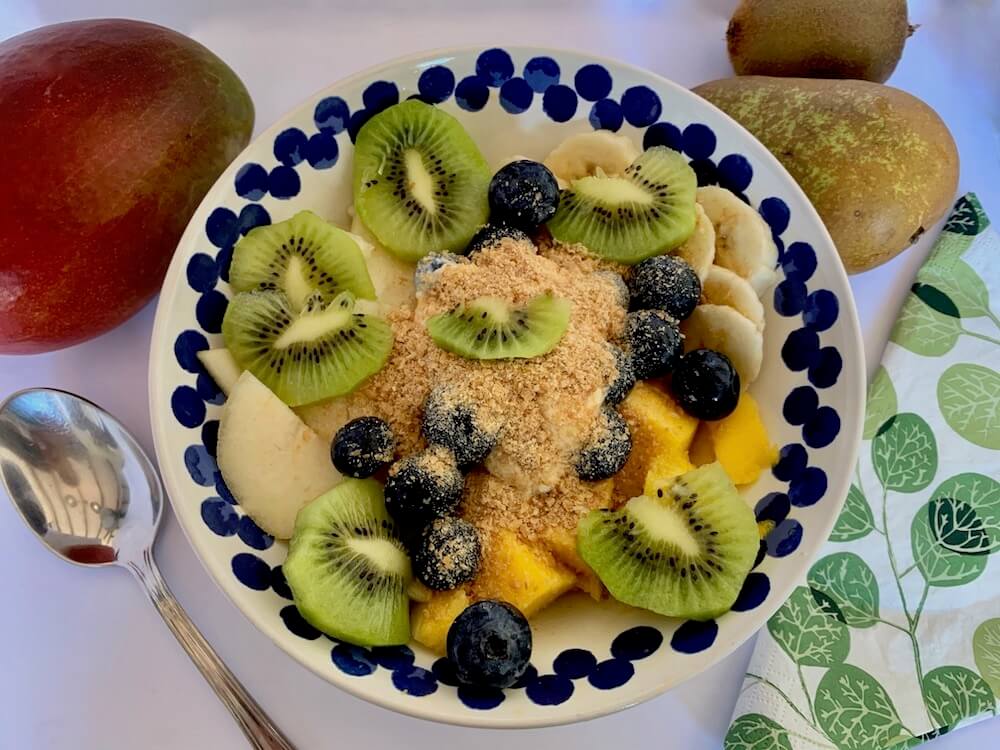
Soup for dinner? Why not add some flax seed on top?
In fact there are so many meals that taste great with flaxseed added. Some of my favourites include Spanish pisto, stuffed zucchini boats or stuffed eggplant.
But really, any meal can be sprinkled with flaxseed. It’s only necessary once a day so if you have it for breakfast then that’s enough for the day.
It even goes well on vegan pancakes.
Flax Seed as an Ingredient in Your Food
If you don’t want to eat the flax seed on top of your food you can hide it in your meals:
- Add ground flaxseed to your smoothie in the morning.
- Mix ground flaxseed into your plant milk before pouring onto your breakfast cereal.
- Bake it into your bread/cake/pancake recipe.
- Sprinkle it into your salad dressing.
- Mix it into your vegan sauce, mayonnaise or yogurt.
- Make vegan energy balls or other snacks and include ground flax seed in the recipe.
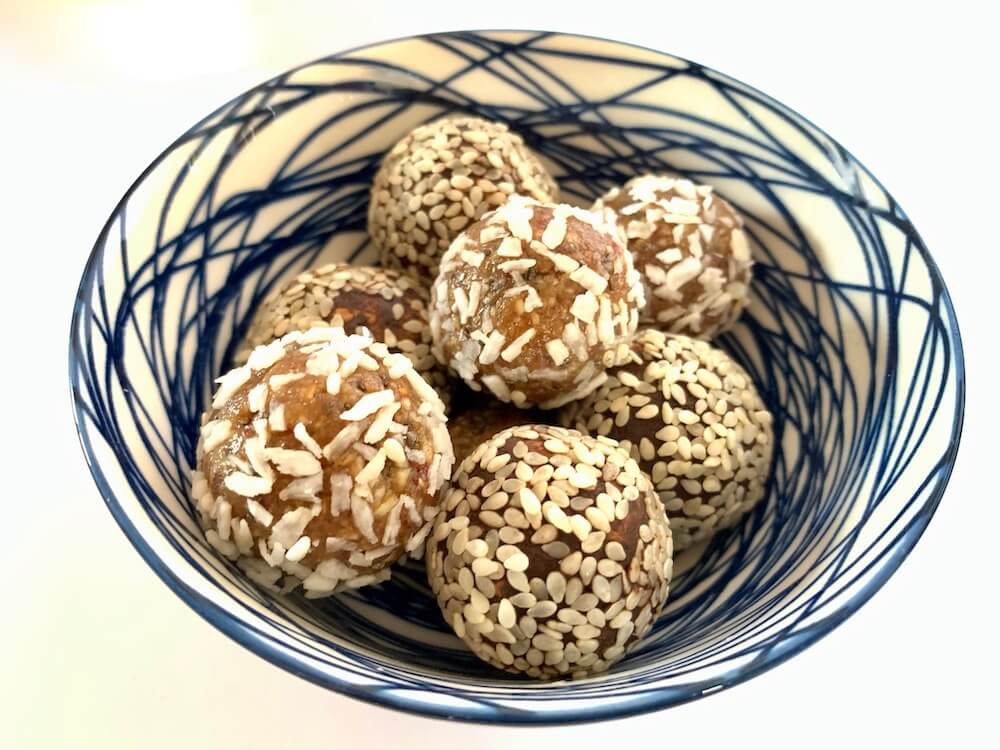
Flax Egg – Flaxseed as An Egg Replacer
Flaxseed is great in cooking as a replacement for egg.
If the recipe needs one egg, use 1 tbs flax soaked in 3 tbs water. Allow to absorb the liquid before adding to your other ingredients.
Flax can be used in baking cakes, bread, biscuits or whatever you’re making.
Flaxseed Jelly
Soak a tablespoon of flaxseed in water until it forms a jelly. Add the jelly to your meal or eat it as it is.
Eating flaxseed jellly can help to regulate your bowel movements.
How Much to Eat in a Day to Get the Benefits of Eating Flax Seeds
The recommended amount of ground flaxseed is 1-2 tbs per day for an average, healthy adult.
Because it’s high in fibre, too much flaxseed can cause upset to your digestive system so it’s best not to get over enthusiastic!
According to the Flax Council of Canada, if you’re a high risk for heart disease, or if you already suffer with a heart condition, you should take a total of 5 tbs of ground flax seed daily (maximum).
So 5 tbs is considered to be the maximum amount of flax seed per day.
Remember to always take it with plenty of fluids as the flax will absorb the liquid around it.
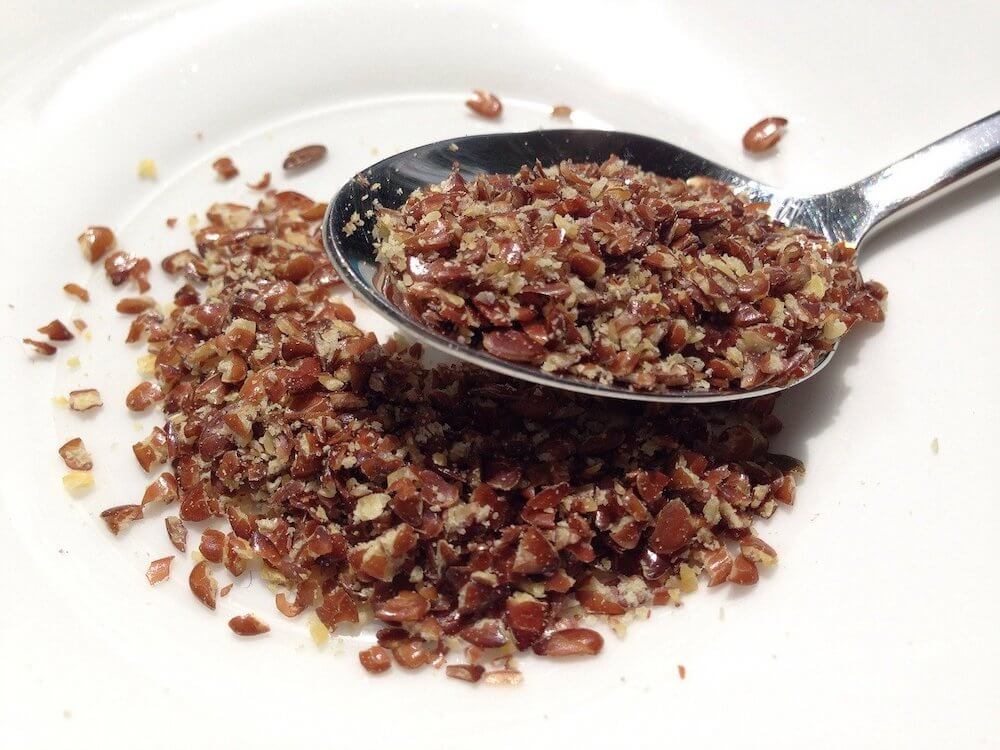
Whole Vs Ground Flaxseed
Whole flaxseed retains the ALA omega 2 inside, so unless it’s completely chewed, you will not get all the benefits that you will from ground flax. Whole flax will pass through the digestive system intact.
You can buy ground flax but I prefer to buy it whole and grind it at home as it can start to lose its nutritional value if it’s been ground for a long time or exposed to light. Buy it whole and grind enough for a week and that way you know you’re getting the full benefits.
Whole flax is still a rich source of fibre to aid in digestion and regulate bowel movements. To eat them whole, soak in water for a few minutes before you eat them until they form a jelly which you can then put on your food (it’s very flavourless and non-intrusive).
You can find more detailed information on flax on the flax council of Canada page.
What I Include in My Vegan, Gluten Free Diet
One question I often get asked is what I take/eat to keep healthy and especially in the beginning when you’re first becoming vegan, it’s important to be aware of your health requirements.
And after that, once you’ve adjusted, there are still healthy things you should consider including in your diet.
The thing is, these healthy recommendations are for everyone. It just so happens that vegans, by default, are often interested in being healthy.
Flax Seeds in My Diet
For years as a vegan/vegetarian I didn’t pay attention to the benefits of eating flax seed, even though I knew how wonderful they were for horses!
Seriously, my horses got flax seed oil but I never ate it myself, or even considered eating it. But that’s long in the past and now I really wouldn’t be without my flax.
In fact, I’m addicted to its grainy flavour even though most people find it rather tasteless.
Not me.
It’s to-die-for!
I eat it every day now. I buy it whole and grind it in a coffee machine so that it’s fresh when I use it.
It’s also an important part of a healthy plant based diet which can help beat menopausal symptoms.
Vitamin B12
For years I didn’t take any form of supplementation or pay attention. I just ‘thought’ I ate a healthy diet because it was rich in vegetables. I knew back then that I should take vitamin b12 but instead of buying it in tablet form, I (sporadically) ate foods which were supplemented with it.
I will never know for sure, because I didn’t get tested, but I believe that I was deficient in B12 for a long while, as I developed nerve damage in my legs and my short term memory was not very good and these are classic symptoms of b12 deficiency.
The realisation of this made me more conscientious about boosting my diet with necessary nutrients. I now take vitamin b12 which I buy on Amazon.
You may be interested to read about the astonishing effects of vitamin B12.

Other Things I Include in My Diet
- Seeds: flax seeds, chia seeds, quinoa, sesame, sunflower, hemp
- Nuts: walnuts, cashews, pine kernels, almonds
- Pulses & legumes: chickpeas, beans, peas, lentils
- Fruit & Veggies
- Vitamin B12
- Multi vitamin including a good source of B-complex
- Sometimes magnesium
- Sometimes vitamin C
- Garlic, turmeric, hibiscus
Also, have you heard about the incredible health benefits of hibiscus? It’s a great flower that makes a tea which I absolutely love.
I drink it hot and cold, almost every day.
Conclusion
I absolutely recommend you go out and buy yourself a coffee grinder, a few packets of whole flax seed and start adding it to your daily food. It goes well on almost anything. Take a look at this mouth watering grilled summer vegetable salad for example.
Simply grind up a packet (or less) of the seed and store it in a jar with a tightly fitting lid in a dark place or even better, in the fridge, to use whenever you want, morning, lunch or dinner.
I hope you enjoyed this post on the powerful benefits of eating flax seeds.
